
Visited by ODOstefan, jrODOdarla and Eloise on the 10th February 2019
In the sleepy Sussex village of Lyminster there is a deep, deep pool. A pool so deep that children are told never to venture near it – for if they were to trip or stumble, they may fall straight through to Australasia. That is, of course, if not first consumed by the beast they call the ‘Knucker’.
They do say, that adunnamany years ago there was a gert dragon lived in that big pond there,Knucker his name was, and Knucker Hole we calls it to-day.
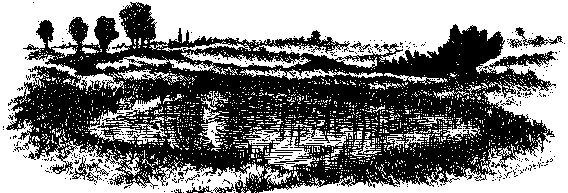
What is a Knucker?
‘Knuckers’ or sometimes, ‘nuckers’ are said to be ‘water monsters’. The word ‘Knucker’ comes from the Anglo-Saxon word ‘nicor’, which directly translates to ‘water dragon’.
Think Loch Ness Monster, but with wings.
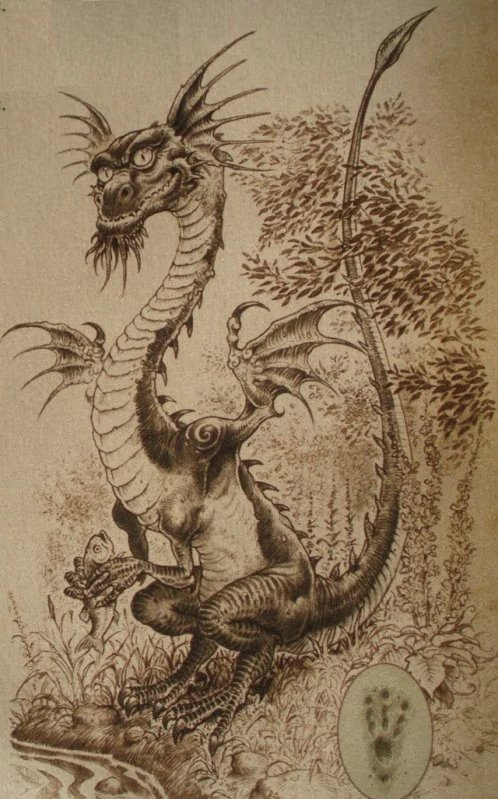
A Knucker named weasel from the Dragonology book series
They can be found in bottomless pools of water known as Knucker Holes. When they aren’t hiding in their holes, they cause trouble by consuming livestock – and in some stories, villagers.
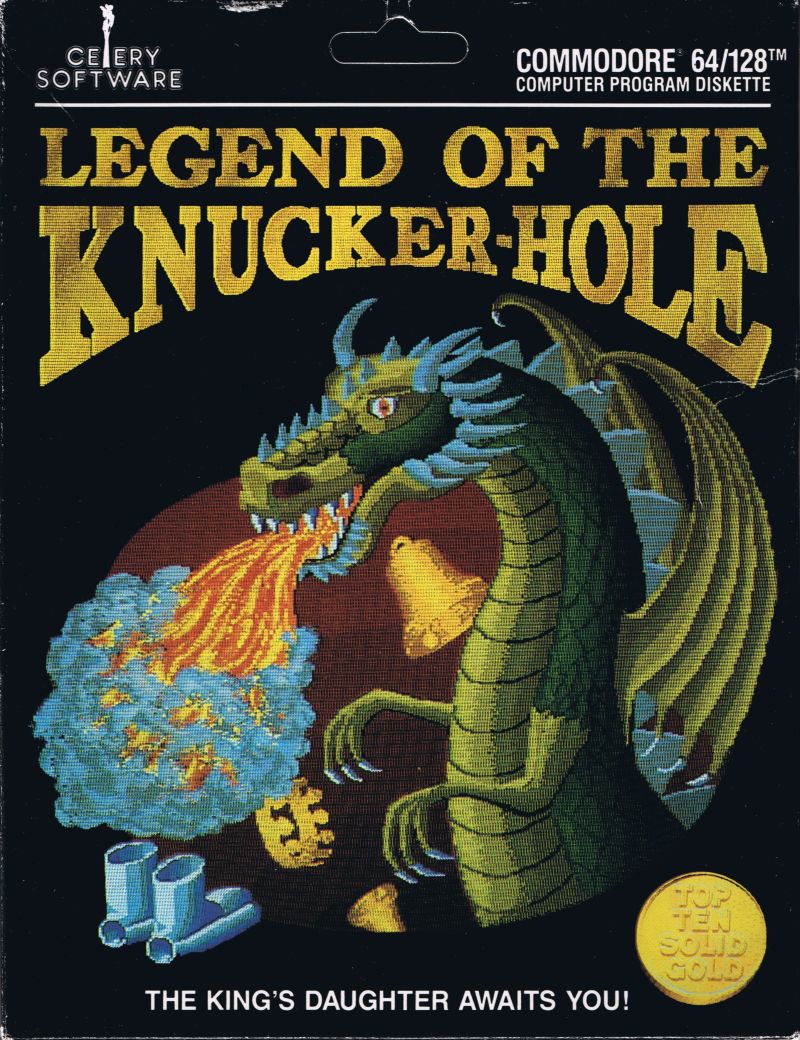
Knuckers have featured in legends across the ages. Most recently, they appeared in the popular children’s book series ‘Dragonology’ and in the mid 1980’s inspired a Commodore 64 game. A Knucker, or similar creature, also pops up in the well-known old-English epic, Beowulf:
On then went the atheling-born
Beowulf, translation by Frances B. Grummere
o’er stone-cliffs steep and strait defiles,
narrow passes and unknown ways,
headlands sheer, and the haunts of the Nicors.
‘Knucker Holes’ can be found scattered across Sussex; presumably, they all once contained a Knucker. However, the legend of only one of these has lasted to this day: that of the Knucker who lived just outside of Littlehampton in the village of Lyminster.
This tale has many variations, with multiple name changes and differing protagonists. But, the most interesting tale was recorded in the Sussex County Magazine in 1929 by one Charles G. Joiner. Joiner’s version was told to him by a man trimming a hedge near the Lyminster Knucker hole.
The text, in old-Sussex dialect, is repeated in full on the Sussex Archaeology website. It is highly recommended that you read this re-telling to add to the ambiance when visiting Knucker hole, but an Odd Days Out version of the story is below.
The Legend
Many years ago in the village of Lyminster, there resided a dragon-like creature known as a Knucker. It lived in a bottomless pit of water known locally as the ‘Knucker hole’.
This fearsome beast could oft be found rampaging through the area; snapping up cows, horses and men.
Desperate to be rid of the Knucker, the villagers of Lyminster appealed to the King of Sussex. The king heard the people’s pleas and promised a great prize to anyone who could slay this fearsome beast.
A man local to the Knucker’s dwelling, Jim Puttock, decided to take up the task. Rather than fight the Knucker in the traditional sense, he baked the dragon a special pudding.
A poisoned Sussex pie.
So Jim set off, pie in hand, to the ‘Knucker hole’.
The Knucker saw Jim approaching and hailed him.
‘How do, Man’ said the Dragon, before adding ‘What you got there’
‘Puddin’’ Jim replied.
‘Puddin’, what be that?’ came the reply
‘Just you try’ said Jim with a sly smile
Then, in the blink of an eye, the beast consumed the pie.
Yawning, the Knucker replied ‘Tweren’t bad’ and began to drift into a deep sleep.
Without delay, Jim grabbed a scythe and lopped off the head of the Knucker. Dragging the Knucker’s head behind him, he set off to the nearby Six Bells pub to celebrate.
Jim entered the pub to a triumphant cheer. The publican told him drinks were on him that night.
Taking his beer, Jim sat down and wiped the froth from the top using his hand.
Unfortunately, Jim had failed to wash his hands after handling the poison.
Taking his first swig, Jim, the great Knucker slayer, began to feel the effect of the venom. He collapsed and died whilst the lifeless head of the Knucker looked down upon him.
Jim was buried in the nearby church. The locals had a whip around and raised enough to pay a stone mason to mark Jim’s tombstone with a sword and a herringbone pattern to signify his great deed.
Hunting a dragon in five easy steps – On the trail of Jim Puttock
Most of the places featured in the Knucker tale can still be visited today. Below, we suggest a path for you to follow to pursue the Knucker.
Unfortunately, the Knucker hole itself is fenced off. An email exchange with the land owners, the Sompting Estate, informed us that not only is this to protect the public from the Dragon, but, from the hole itself. The Knucker hole is sheer sided and at least 15 metre’s deep. Occasional tours (once every year or so) are available, so keep an eye on the Sompting Estate website if you wish to visit the hole.
But don’t let this deter you, a tour of the sites you can visit make for a fantastic Odd Day Out:
Step one – Get Baking
Before setting off, we suggest baking a Sussex Pie to take with you.
You can find a Sussex Pie recipe from Sussex Past by clicking here or here (Scroll to the last page of the PDF). If you prefer a savoury version, you can visit the Alphabet Soup blog for a lentil based pie.
Step two – Head to Lyminster
Lyminster is just outside of Littlehampton. It consists of a small road, a church, farm buildings and a few dwellings. We visited on a Sunday during a Church service, but even at this time parking on the small road was possible.
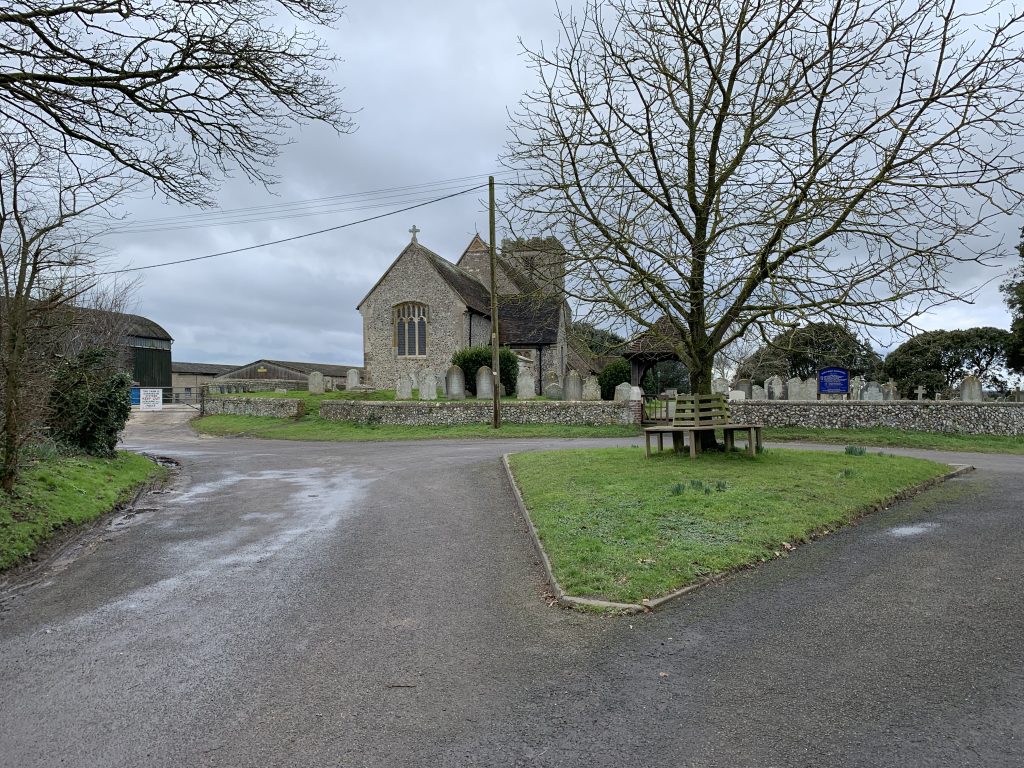
The postcode of the local church is BN17 7QJ.
Step three – Knucker Hole
Once you have managed to park up, your next stop should be the Knucker Hole. Facing the church from Church Lane, head down the path to the right and continue through the stile.
Turning right you will get a fantastic view of Arundel. Straight ahead will be a large fenced off area, continue walking along the path towards this. As you draw level with the fence you will notice a locked gate – this is where you can get the best view into the Knucker’s habitat.
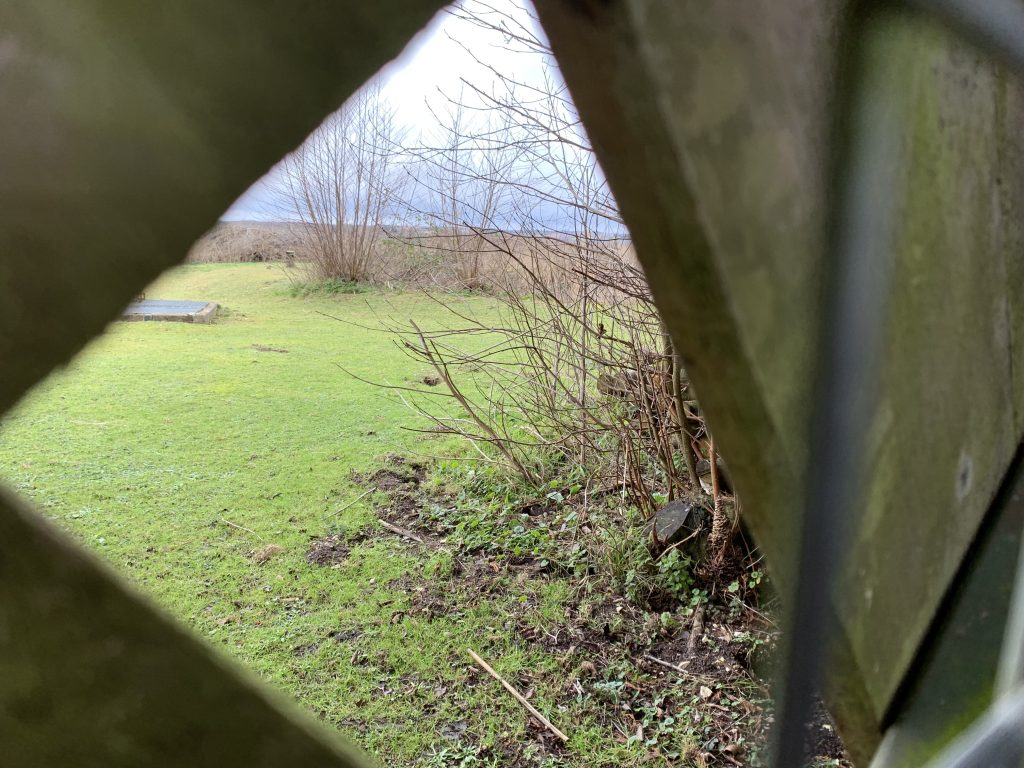
Here be dragons 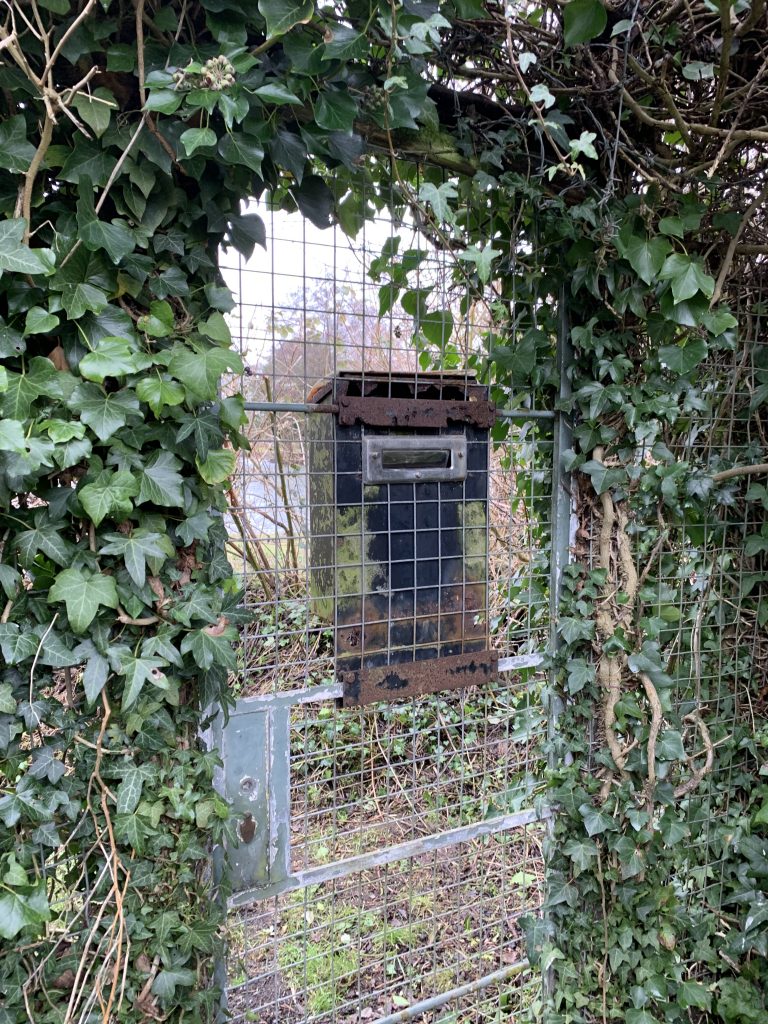
The Knucker’s gate and letter box
The actual Knucker hole itself is slightly further along, so continue walking and try to peer over or through the fence to catch a glimpse of the Knucker hole.
Step four – The church
Once you have finished exploring the landscape, retrace your steps and head towards the church. Once you have passed back through the stile, you will see a cut through to the church on your right. Follow this path to the church door.
St. Mary Magdalene is a beautiful Saxon church dating back to 1040. The church is undoubtedly proud of its part in the history of dragon slaying: the area the youth group meets in is known as the ‘Dragon’s den’.

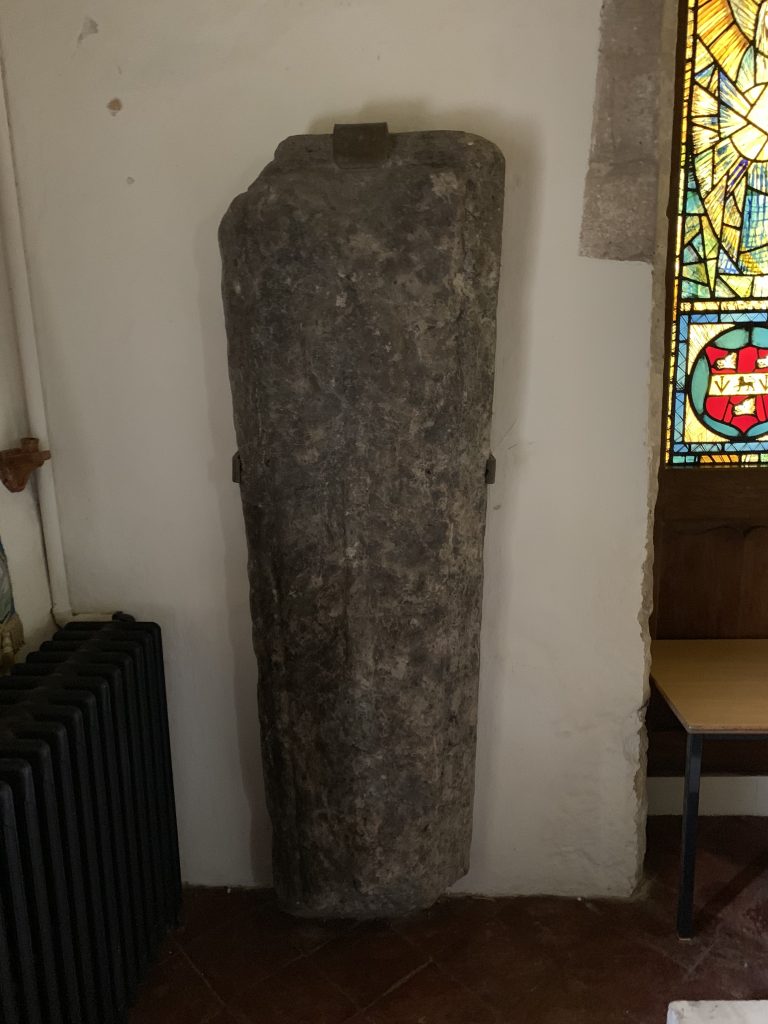
When entering the church, on your left will be a magnificent stained glass panel depicting Jim Puttock’s slaying of the Knucker.
After gazing upon the panel, look to it’s left to see the ‘Slayer’s slab’ – Jim Puttock’s gravestone. It was moved into the church after the elements began to get the better of it. In the dim light of the church you may struggle to make out the herringbone pattern that signifies the Dragon, but the raised sword is still fairly obvious.
Step five – Head to the pub
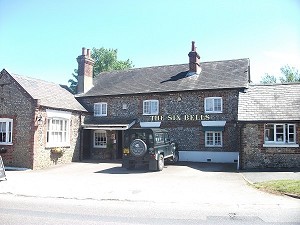
A pub, still named The Six Bells stands on the site where Jim Puttock met his fate. After your successful Knucker hunt, why not reward yourself with a pint – just make sure you wash your hands…
To get to the pub, walk back along church lane. Take a right on Lyminster road and continue walking for about 500 metres, the Six Bells will be on your left.
Sources
Folklore of Sussex, Jacqueline Simpson. 2009 Edition, 2013reprint
http://www.sussexarch.org.uk/saaf/dragon.html
https://sussexpast.co.uk/wp-content/uploads/2012/02/The-Knucker-Story-and-Pie-recipe.pdf
https://www.poetryfoundation.org/poems/50114/beowulf-modern-english-translation
Recipe for the Actual Sussex Pie, please. Lentil s are horrible, as are vegans. You only have the live link to the Lentil pie. I googled Sussex pie, and came up with naught. Both I, and as well as I surmise the the dragon , would well be more pleased with a real Sussex meat pie. The Wyrm didn’t terrorize the neighborhood, digging up their turnip fields and such. He went straight for their livestock!!!! This is my Email, please send the link for proper Sussex Pie, at your earliest convenience. Please , and Thank you.
Thanks for your comment, I have updated the missing link!
It seems the Knucker had a bit of a sweet tooth! According to Sussex Past & Foods of England, the Sussex Pie contains a Filling of chopped apple and mixed dried fruits with sweet spices. (White 1932)
https://sussexpast.co.uk/wp-content/uploads/2012/02/The-Knucker-Story-and-Pie-recipe.pdf
http://www.foodsofengland.co.uk/sussexpie.htm
Excellent article. When I open it though there is a warning about something not opening properly.